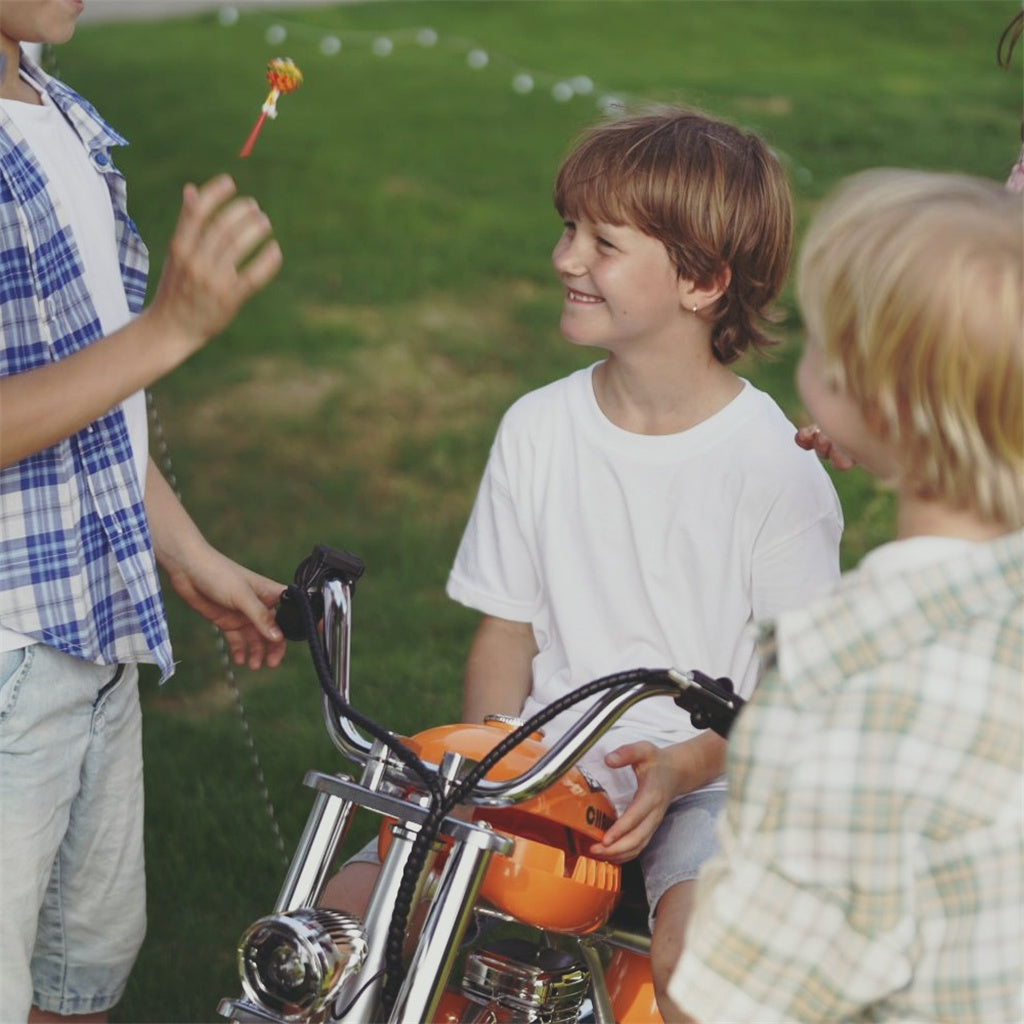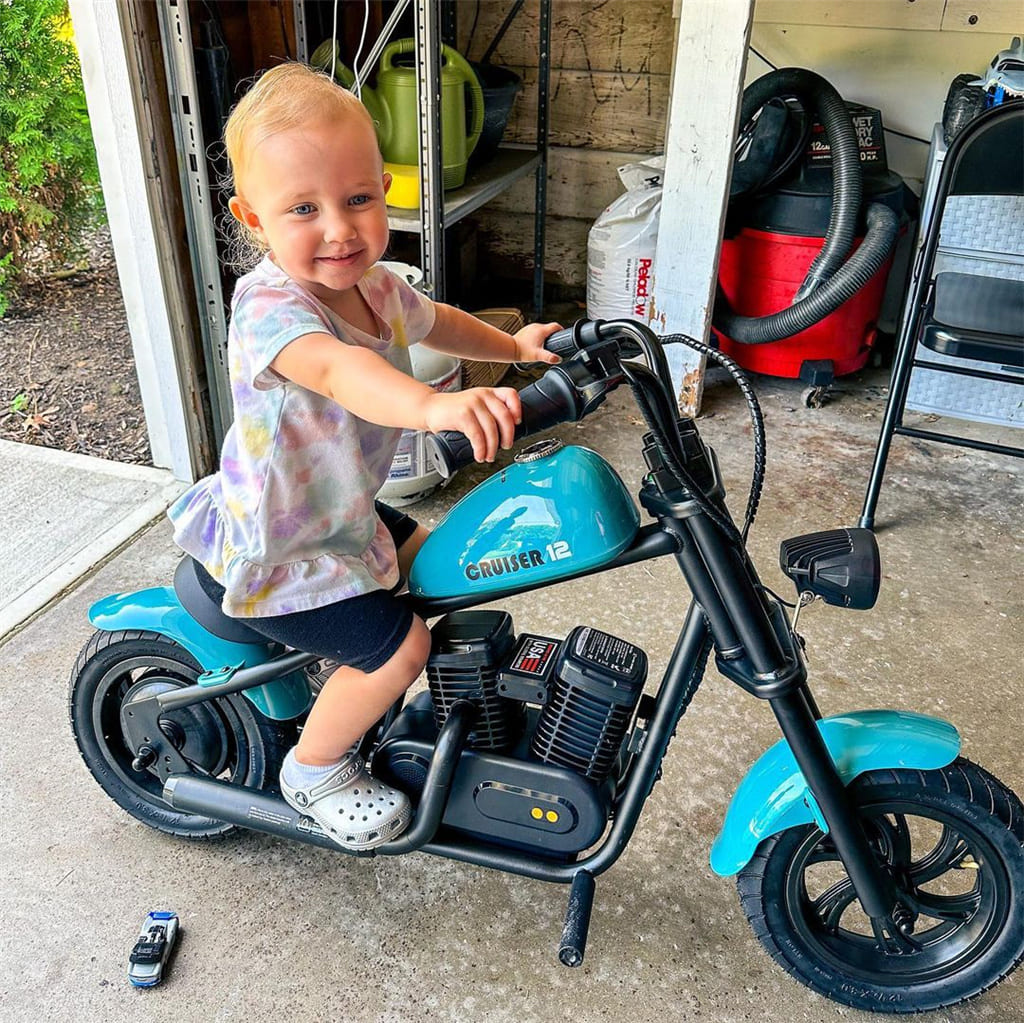Selecting the ideal motorcycle for an eight-year-old can be both exhilarating and daunting for parents, so this guide aims to simplify this decision-making process by exploring various types of electric and gas-powered bikes available, along with their benefits and drawbacks. We'll cover performance specifications, safety features, sizing considerations, customization choices and environmental impacts of each option so you can make an informed decision. Beyond mere transportation needs, this guide also explores how motorbikes can serve as development tools by improving cognitive abilities, physical coordination skills, and social interactions among children.
Introduction to Motorcycle Types

Selecting the ideal motorcycle for your child requires understanding the differences between electric and gas-powered models. Each offers unique benefits that could affect their riding experience.
-
Overview of Electric vs. Gas-Powered Motorcycles
Electric motorcycles have quickly become the choice of young riders due to their ease of use and environmental benefits, especially in residential areas. Equipped with rechargeable batteries for quieter operation and with no complex maintenance requirements like gas-powered motorcycles require, electric motorcycles make life simpler for parents while being the more environmentally friendly option for young riders who admire a traditional biking experience. Gas-powered bikes, however, often outlive their electric counterparts when it comes to long-lasting performance and rigorous riding activities - something electric motorbikes cannot match.
-
Benefits and Drawbacks of Each Type for Young Riders
Selecting an electric motorcycle means choosing an economical, low-maintenance option better for the environment than its gas-powered counterparts. These bikes are great ways to introduce young riders to renewable energy sources like renewable power as well as responsible riding habits early in their development; however, performance might be limited in comparison with gas-powered motorcycles, which provide a more dynamic riding experience with greater noise levels, emissions and maintenance requirements - parents must carefully weigh these considerations when selecting which will best meet the environment and interest levels of their child.
Performance and Safety Features
Ensuring the motorcycle you select for your child is equipped with all the appropriate performance features and safety precautions is paramount.
-
Engine Power, Speed Limitations, and Safety Features
A motorcycle's engine power determines its top speed, which is crucial when considering whether to buy a motorcycle for a young rider. For example, HYPER GOGO's Cruiser 12 Plus mini chopper motorcycle designed specifically for children comes with adjustable speed settings so parents can safely control the top speed. Many also have emergency engine cut-off and stabilization braking systems to help protect young riders from unexpected situations.
-
Importance of Helmets, Gloves, and Protective Gear
Safety cannot be understated when it comes to children riding motorcycles. High-quality helmets that fit well can dramatically reduce head injuries, while gloves and padded clothing provide additional protection in case of falls. Parents should make sure that all gear meets current safety standards and fits perfectly without hampering mobility or comfort for their child while riding.
You can take a look at the two safe Kids helmets launched by HYPER GOGO.
Size, Weight, and Customization
Personalizing a motorcycle for children can make riding safer and more enjoyable.
-
Choosing the Right Size and Weight for Comfort and Safety
A motorcycle that is too heavy or too large can intimidate and overwhelm young riders, leading them down dangerous paths that lead to accidents. Therefore, it is important for parents to choose a model that fits their children's body shape comfortably, so that their feet can comfortably touch the ground and their hands can easily reach the handlebars and brakes. The Cruiser 12 Plusmini chopper motorcycle is suitable for 2'9" - 5'3 " children, so a safe ride is ensured. Doing this ensures optimal control and confidence – two key ingredients for successful motorcycle riding!
-
Customization Options for Enhancing Safety and Efficiency
Personalization options, like adjustable handlebars and seats, can ensure the motorcycle grows with your child as they age, providing a better fit. Customizing its appearance with stickers, colours, or accessories can also increase engagement for children who learn and ride more proficiently.
environment while further building confidence.
Follow-up Reads: What Size Motorcycle Toy Should Children Aged 4-10 Choose?
Cost and Environmental Considerations
Investment decisions related to motorcycle purchases for children involve more than upfront costs; there are also ongoing expenses and environmental impact considerations.
-
Analysis of Initial Costs, Maintenance, and Potential Savings
Due to their advanced technologies, electric motorcycles may have higher initial costs; however, over time, they typically require less maintenance, saving money on both services and fuel consumption. Gas-powered motorcycles may initially cost less but usually have more recurring running expenses, such as gas consumption and engine servicing, that add up over time.
-
Eco-friendly Practices and Choosing Sustainable Models
Opting for an electric motorcycle promotes environmentally sustainable practices by decreasing fossil fuel consumption and emissions, teaching children about their choices' impact on the planet, and extending the lifespan of the motorcycle through proper maintenance. Thus, it furthers sustainability efforts.
Motorcycling as a Developmental Tool
Motorcycling provides multiple benefits that transcend transportation or recreation; it has been found to play a pivotal role in contributing significantly to children's development.
-
Cognitive and Physical Benefits for Children
Riding a motorcycle requires physical and mental coordination to manoeuvre safely through various speeds and terrains. It improves motor skills, balance, spatial awareness, navigation skills, problem-solving abilities, and decision-making abilities of children of all ages.
-
Skills Development through Basic Mechanics and Riding
Maintaining and caring for a motorcycle can provide valuable mechanical knowledge and skills. Not only will learning this process teach the mechanics behind how it operates, but it will also encourage responsibility and independence among children who participate. Furthermore, engaging children in maintaining their bikes can strengthen attention to detail and technical understanding.

Combining Fun, Education, and Social Interaction
Integrating fun educational aspects and social interactions into motorcycling can significantly enhance its appeal for children.
-
Educational Games and Activities Involving Motorcycles
Parents can add educational elements to motorcycling by using route planning as an opportunity to teach geography or tracking riding time as an exercise in math. Activities like motorcycle maintenance can also serve as educational lessons in physics and engineering.
-
Family Outings and Social Group Rides for Engagement
Participating in group rides and motorcycle-related events can help children build social skills and foster friendships among like-minded peers. Family outings on motorcycles provide another great way for families to come together around shared memories centred on a passion.
Legal Awareness and Ethical Riding
Integrating legal and ethical awareness into motorcycling lessons from an early age is paramount to raising responsible riders.
-
Understanding Local Laws Regarding Children's Motorcycles
Parents need to ensure they are fully informed about the laws that regulate children's motorcycle riding in their area, including age restrictions, required safety gear, and permissible riding areas. This will help ensure a legal yet safe riding experience for their kids.
-
Teaching Responsibility and Ethical Riding Practices
Promoting ethical riding practices means teaching children to be considerate of other motorists on the road, stay within safety restrictions, and adequately care for their motorcycles. Such lessons enable young riders to become responsible, respectful, and competent motorcyclists.
Conclusion
Exploring and buying Kids Motorcycle for your kids isn't just about finding a fun hobby - it's an opportunity to further their development through fun and interactive learning experiences. This guide gives you all the knowledge and insights you need to choose the right type of bike, understand safety protocols, understand development benefits, cost considerations and environmental impact analysis to guide you on a safe and enjoyable motorcycle journey.
FAQs
What is the best type of motorcycle for an 8-year-old beginner?
Electric motorcycles are generally the best choice for beginners due to their ease of use, safety features, and environmental benefits. They offer a manageable entry point for young riders, with speed limitations that enhance safety.
How important is protective gear for young motorcycle riders?
Protective gear is crucial for young riders. It significantly reduces the risk of injuries. Essentials include a well-fitting helmet, gloves, knee and elbow pads, and rugged clothing designed to protect against falls and scrapes.
Can motorcycling really help in my child’s development?
Yes, motorcycling can aid in your child's development by improving motor skills, enhancing problem-solving abilities, and boosting cognitive functions. It also teaches them responsibility and mechanical skills, contributing to their overall growth and maturity.








